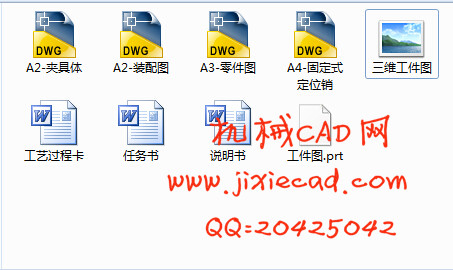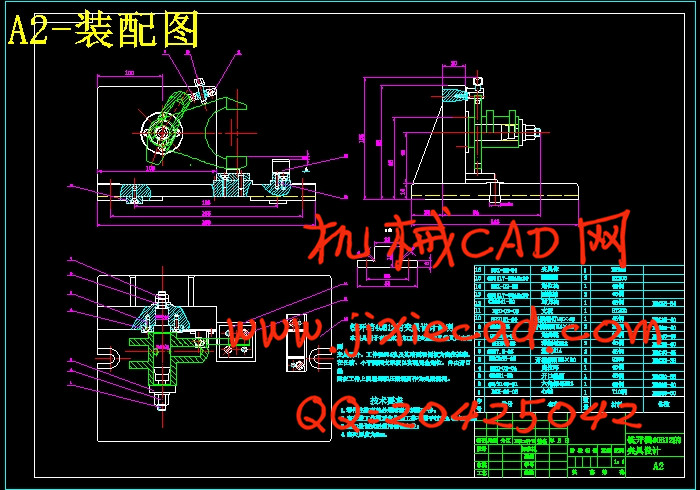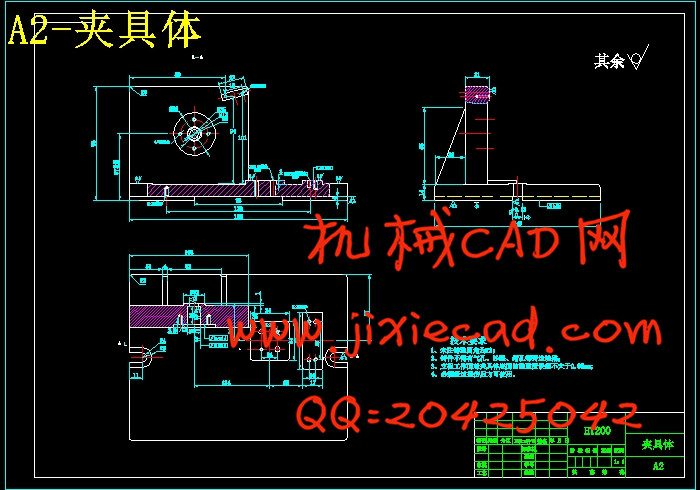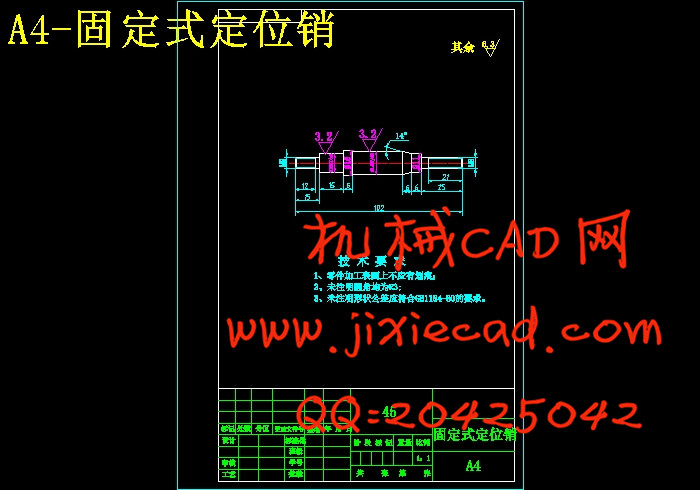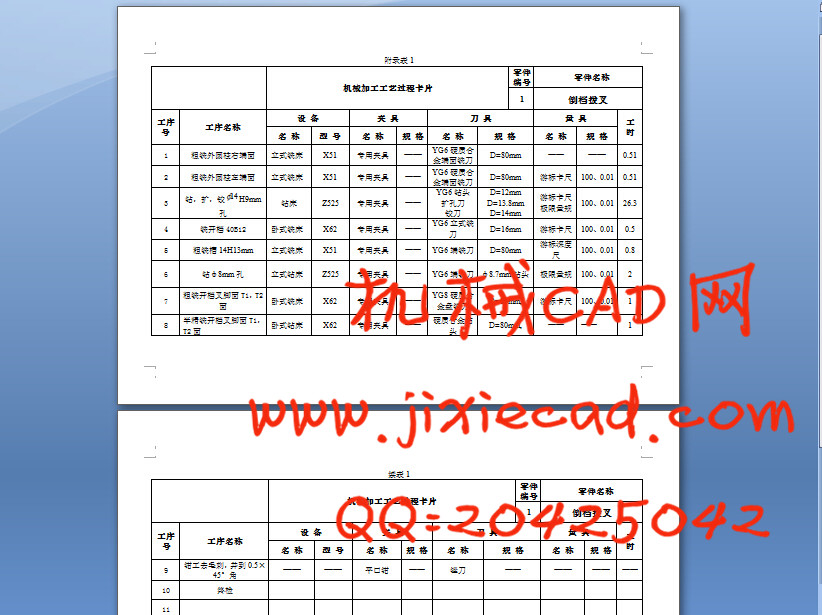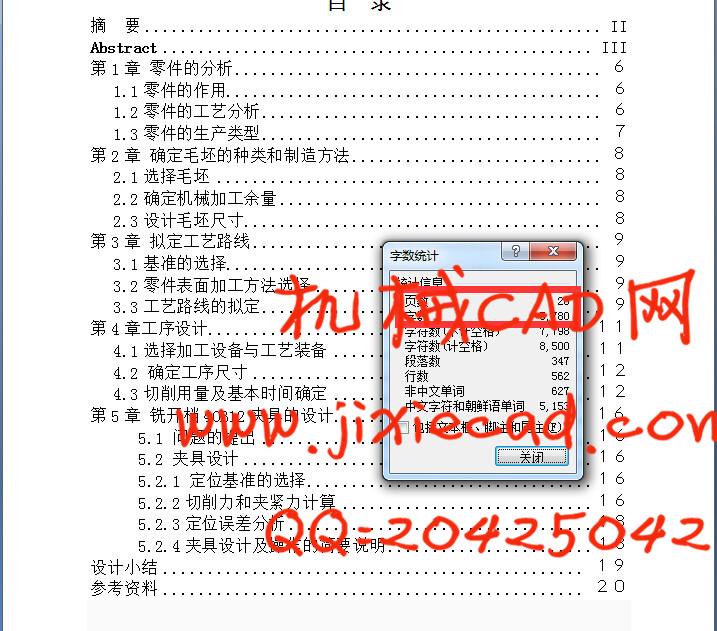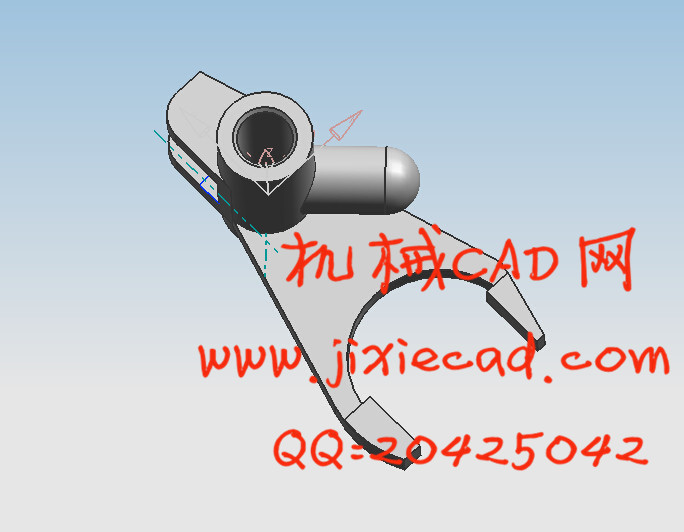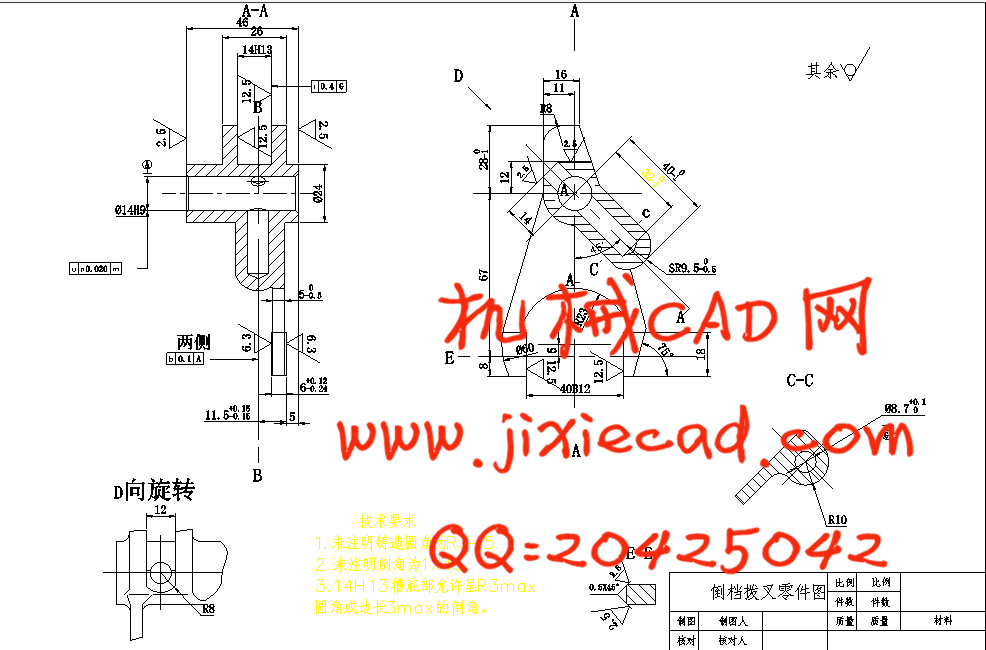设计简介
摘 要
本设计倒档拔叉零件加工过程的基础设计的夹具设计。主要加工部位是平面和孔加工。在一般情况下,确保比保证精密加工孔很容易。因此,设计遵循的原则是先加工面后加工孔表面。在零件的夹具设计中,主要是根据零件加工工序要求,分析应限的自由度数,进而根据零件的表面特征选定定位元件,再分析所选定位元件能否限定应限自由度。确定了定位元件后还需要选择夹紧元件,最后就是确定专用夹具的结构形式。关键词:倒档拔叉零件;工艺;夹具;
Abstract
The design of turntable parts machining process based design of fixture design. The main processing parts processing plane and holes. In general, ensure easy to guarantee precision machining holes than. Therefore, the design principle is first machined surface after machining hole surface. In the fixture design of parts, mainly according to the requirement of machining process, the number of degrees of freedom analysis should limit, then according to the surface characteristics of components selected location element, then analyze the selected location components can be qualified shall be limited degrees of freedom. Determine the location element also need to select the clamping element, the last is to determine the structure of the special fixture.Keywords: cutter turntable parts; technology; fixture;
目 录
摘 要. II
Abstract III
第1章 零件的分析. 6
1.1零件的作用. 6
1.2零件的工艺分析. 6
1.3零件的生产类型. 7
第2章 确定毛坯的种类和制造方法. 8
2.1选择毛坯. 8
2.2确定机械加工余量. 8
2.3设计毛坯尺寸. 8
第3章 拟定工艺路线. 9
3.1基准的选择. 9
3.2零件表面加工方法选择. 9
3.3工艺路线的拟定. 9
第4章工序设计. 11
4.1选择加工设备与工艺装备. 11
4.2 确定工序尺寸. 12
4.3切削用量及基本时间确定. 12
第5章 铣开档40B12夹具的设计. 16
5.1 问题的提出. 16
5.2 夹具设计. 16
5.2.1 定位基准的选择. 16
5.2.2切削力和夹紧力计算. 16
5.2.3定位误差分析. 18
5.2.4夹具设计及操作的简要说明. 18
设计小结. 19
参考资料. 20


